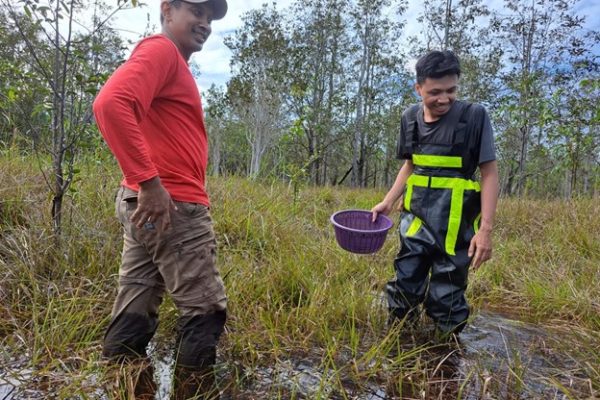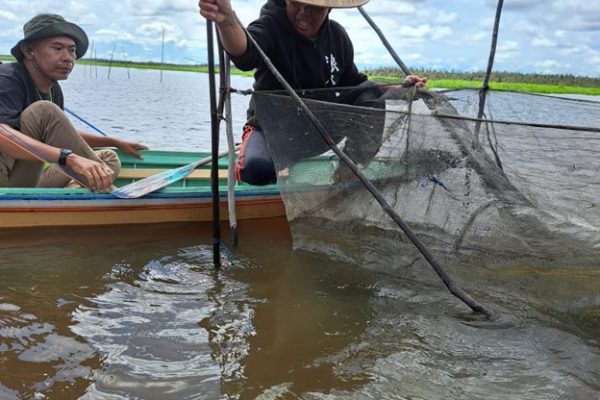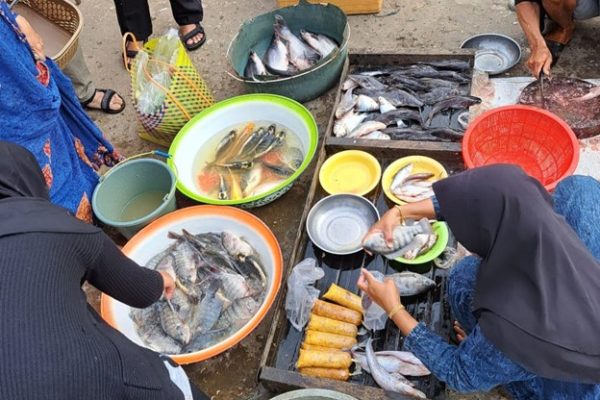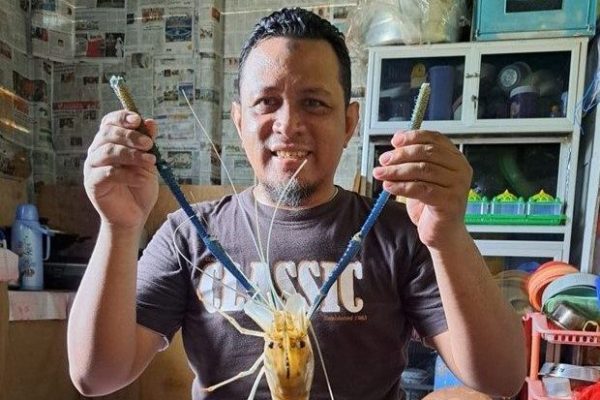The research on biodiversity and conservation status of freshwater biota, including fish and crustaceans, particularly in peat water ecosystems in East Kalimantan, is still insufficiently documented. Therefore, the Nusantara Nature Conservation Foundation (YKAN) is planning a research activity on freshwater biota in Lake Siran, located in Muara Siran Village, Muara Kaman District, Kutai Kartanegara, East Kalimantan, involving lecturers, students, and alumni from the Faculty of Biology at UGM. The involved lecturers were Donan Satria Yudha, S.Si., M.Sc., and Rury Eprilurahman, S.Si., M.Sc., from the animal systematics laboratory. Engaged students in the research include Muhamad Afnisa’a Rozaqi (undergraduate student), Maula Haqul Dafa, S.Pd. (graduate student), and Hastin Ambar Asti, S.Si., M.Sc. (Faculty of Biology UGM Alumni), assisted by Mr. Susilo Irwanjasmoro from Wagleri Foundation. YKAN staff actively participating in field sampling were Eka Cahyaningrum, S.Si. (Faculty of Biology UGM alumni and serving as Biodiversity and High Conservation Value Specialist at YKAN) and Mohamad Arif Rifqi, S.Si. as Endangered Species Conservation Specialist at YKAN.
This activity was carried out because the landscape of Muara Siran had been the largest peatland ecosystem in East Kalimantan, covering approximately 30,000 hectares and provided livelihood for the surrounding community as well as habitats for numerous endemic species. However, Muara Siran was threatened by unsustainable farming practices and the unsustainable harvesting of aquatic biota. In relation to this, to support the development of a conservation action plan in the Muara Siran Village, a survey was necessary to understand the biodiversity of these aquatic biota and their role in the economic needs of the community.
The research was carried out for 6 days in the Muara Siran landscape, starting from the Kani River, known as blackwater due to its peat characteristics, leading to Lake Siran and then to the Siran River. Sampling of freshwater biota was conducted twice daily, in the morning and at night. Our data on freshwater biota was obtained through two methods: direct sampling using traps, recording the captured freshwater biota by fishers’ nets or traps, and the types of fish from the fish market in the Muara Kaman District. The data collected included 56 species of fish, 3 species of shrimp, 1 species of crab, 2 species of water snakes, 1 species of python, and 1 species of water monitor lizard. Further analysis is needed to understand the biodiversity of freshwater biota and comprehend the commercially significant types of fish and crustaceans, along with the catch quantities, in terms of their economic value.




